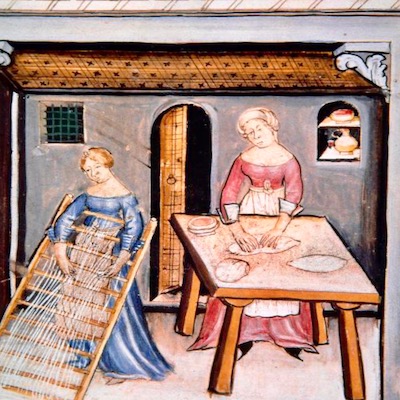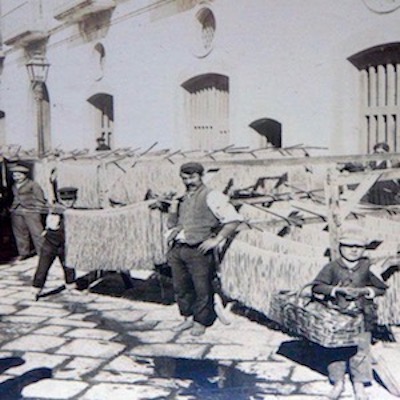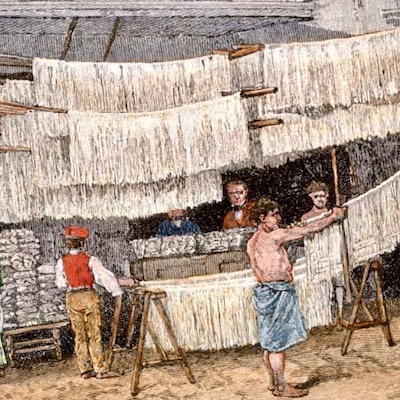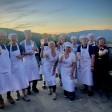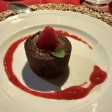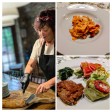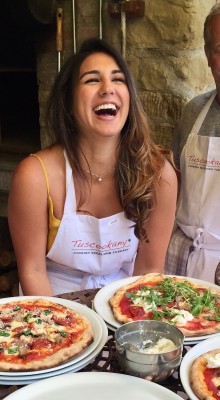Pasta was invented by Italians and has become symbolic for their kitchen
May 18, 2018
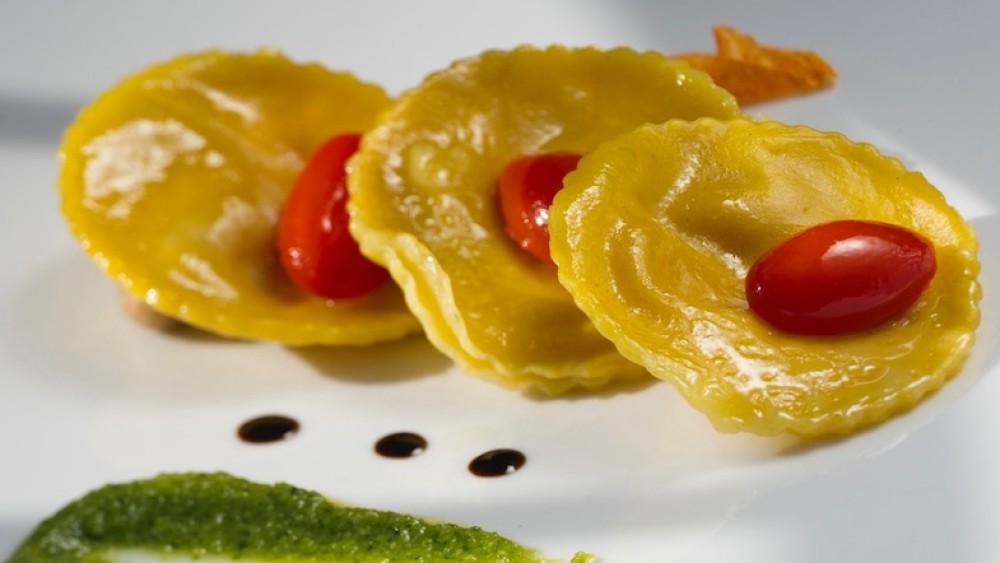
When the Greeks found Naples, they adopted a dish made by the natives, made with barley-flour pasta and water dried by the sun.
We also find references to pasta dishes in ancient Rome, which dates back to the 3rd century before Christ. In fact, the Roman Cicero himself speaks about his passion for the “Laganum”, the “laganas”, which are the long pasta (wheat-flour pasta, wide flat shaped sheets). During that time, the Romans developed instruments, tools and procedures (machines) to manufacture the pasta for lasagna. Ever since, cereals have exhibited great facilities for both its transportation as well as its storage. It was the Roman expansion and dominion which fostered the harvesting of cereals in the whole Mediterranean basin.
Look out for World Pasta Day celebrated annually on October 25th, with a plate of your favorite pasta!
The first World Pasta Congress was held in Rome, Italy on October 25th, 1995, when World Pasta Day was established by 40 International pasta producers.
Types of Pasta
There are two major classifications: pasta fresca (fresh) and pasta secca (dried). From here, there are more than 400 unique types of pasta that altogether have more than 1300 names: sheets, strips, long strands, cylinders, unique shapes, flavors, and many other local varieties.
This 14th-century Italian miniature shows two stages in pasta making. The woman to the rightis kneading the dough while her colleague is hanging cut strips of vermicelli - little worms - to dry on a rack.Much later, a thicker variation of vermicelli developed, today known as spaghetti.
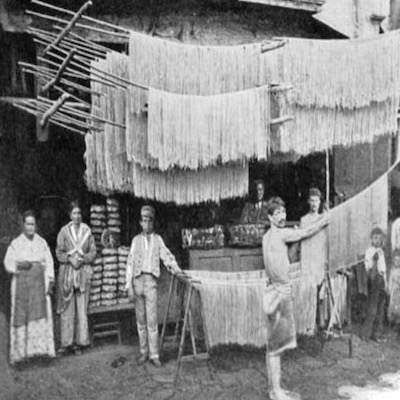 Pasta Vendors
Pasta Vendors
Pasta vendors in 1880s Naples sell vermicelli in industrial quantities in this 19th-century hand-colored woodcut painting.
Spaghetti (at the time called macaroni) drying in the streets of Naples, circa 1895.
Photo from more than 400 years after the commercial production of pasta began (the first photography was taken in 1827 by French inventor Joseph Nicéphore Niépce.
10 Most Importand Pastas:
Fusilli
Three-edged spiral, usually in mixed colors. Many vendors and brands sold as Fusilli are two-edged. Variations: Fusilli Bucati, Fusilli Lunghi Bucati. Fusilli may be solid or hollow. A variant type of Fusilli is formed as hollow tubes of pasta that is twisted into springs or corkscrews and is called Fusilli Bucati. Another variant is twisted long lengths as though Spaghetti were coiled around an object known as Fusilli Lunghi. Fusilli Napoletani are flat lengths of coiled pasta formed around a spindle. From Fusile, archaic/dialect form of Fucile, meaning rifle. As the inside barrel of a gun is “rifled” using a similar screw-shaped device. Fusilli pasta as originally developed in Southern Italy, Campania, by rolling fresh Spaghetti around a thin rod and letting it dry. The "Fusillo" shape was then developed as a pasta shape in its own right.
Spaghetti
Most common round-rod pasta.
Variations: Bucatini, Spaghettoni, Spaghettini, Fedelini, Spaghetti alla Chitarra, Sciatelli, Rigatoni and Linguine.
Originally, Spaghetti was notably long, but shorter lengths gained in popularity during the latter half of the 20th century and now it is most commonly available in 25–30 cm (10–12 in) lengths.
The modern word "Macaroni" derives from the Sicilian term for kneading dough with energy, as early pasta making was often a laborious, day-long process. Spago means twine, Spaghetto means little twine, Spaghetti is plural. Sicily appears to have been the first place in Europe where pasta was made in long thin strands and subsequently dried. Durum wheat was well-suited to the soil and weather of Sicily and equally to Campania, the region around Naples. It was grown in large quantities in southern Italy. Naples also had an ideal climate for drying pasta: mild sea breezes alternating with hot winds from Mount Vesuvius. This ensured that the pasta would not dry too slowly and become moldy, or dry too fast and crack.
Fettuccine
Ribbon of pasta approximately 6.5 millimeters wide. Fettuce - Wider version of Fettuccine. Modern Fettuccine Alfredo was invented by Alfredo di Lelio in Rome, in the early to mid-20th century. The story goes that in 1914, a man named Alfredo di Lelio was trying to cook something that would please his pregnant wife. He created a sauce made from parmesan cheese and butter and poured it over some fettuccine. Di Lelio opened a restaurant in Italy and served his fettuccine dish. Little ribbons. Originated in Lazio.
Linguine
Flattened Spaghetti. A thinner version of Linguine is called Linguettine. Little tongues. Linguine originated in Genoa and the Liguria region of Italy. Linguine alle vongole (linguine with clams) and Trenette al pestoare are popular uses of this pasta.
Penne
A type of tubular pasta having diagonally cut ends cylinder-shaped pieces. Penne is the plural form of the Italian Penna, deriving from ??? Variations: Penne Lisce, Penne Rigate, Pennoni, Mostaccioli. Latin Penna (meaning "feather" or "quill"), and is a cognate of the English word pen. Originated in Campania, a region in Southern Italy.
Cannelloni
Tubular pasta. Large tubes, approximately 4 inches long and 1 inch wide, cut straight on both ends with a smooth surface, usually stuffed with a meat or cheese filling. This tube-like pasta is generally mistaken with the Italian pasta called Manicotti. Manicotti – which roughly means “sleeves” – is a filled crepe rather than an actual pasta and is traditionally prepared in a special crepe pan. Italian, literally ‘large tubes’, from Cannello ‘tube’. The origin of Cannelloni dates back to around 1907, when Nicola Federico, a well-known chef from Naples, Italy, invented this pasta. He created it while working at the La Favoria, a popular restaurant in Sorrento, Italy. Initially, this tubular pasta was called “Strascinati”, which soon came to be known by the name that is popular today – Cannelloni. It gained popularity when the residents of Naples fled to Sorrento, during World War II, which is when they got introduced to this pasta. Today, most restaurants across the world prepare various cannelloni dishes.
Tagliatelle
Ribbon fairly thinner than fettucine. Variations: Pizzoccheri, Tagliolini. From “Tagliare” – to cut. Originated from the Emilia-Romagna and Marche regions of Italy. Legend has it that the tagliatelle shape--strips of pasta about a half inch wide, was invented in 1487 by Maestro Zafirano, a cook from the village of Bentivoglio (Emilia-Romagna), on the occasion of the marriage of Lucrezia Borgia to the Duke of Ferrara. The cook was said to be inspired by the beautiful blond hair of the bride. Despite the appeal of this romantic notion, it seems likely that the invention of tagliatelle in Italy is earlier.
Farfalle
Bow tie or butterfly shaped. Farfalle come in several sizes, but they all have a distinctive "bow tie" shape. Variations: Farfalle Rigate, Farfallone, Farfalline Translation is Butterflies. Farfalle dates back to the 16th century in the Lombardy and Emilia-Romagna regions of Northern Italy.
Tortellini
Ring-shaped. Stuffed with a mixture of meat and cheese. Sometimes also described as "navel shaped", hence their alternative name of "belly button" (ombelico). In the Italian city of Modena, Farfalle is known as Strichetti. Italian, plural of Tortellino, diminutive of Tortello ‘small cake, fritter’. Originated in Emilia-Romagna.
Rigatoni
Large and slightly curved tube. They are larger than Penne and Ziti, and sometimes slightly curved, though nowhere near as curved as Elbow Macaroni. And unlike Penne, Rigatoni's ends are cut square (perpendicular) to the tube walls instead of diagonally. From Riga, meaning line: Rigatoni is pasta with lines (large). Rigato or Rigate, when added to another pasta name means lined, or, with ridges added, as in “Spaghetti Rigati”. Originated in Southern Italy, Sicily.
We’d love to hear from you. Please feel free to comment and share our post about Pasta with your friends.
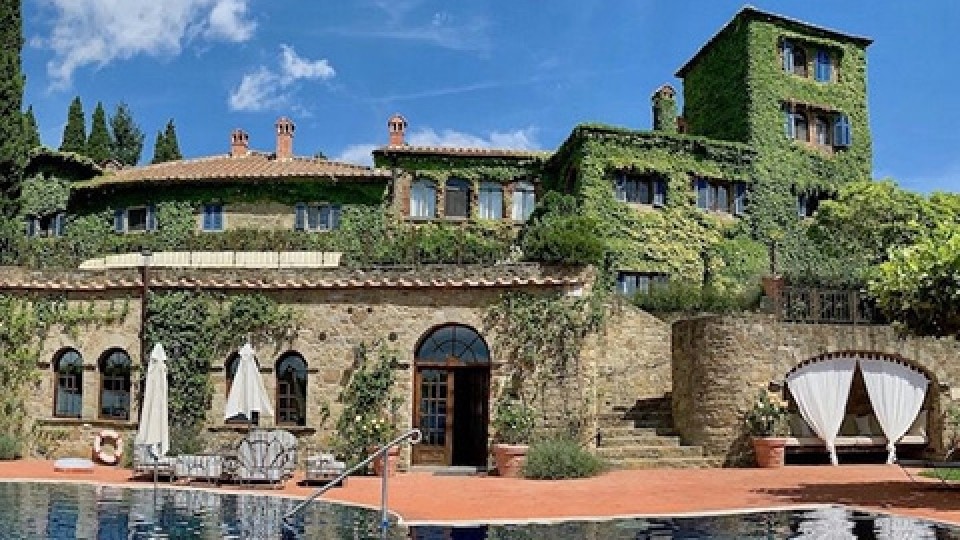
Interested in our cooking courses at one of our Tuscan villas?
Do you want to enjoy our Tuscany cooking classes with plenty of time to explore in your free time, all while staying in an amazing villa?
Reviews
How our guests experienced the Tuscookany courses
Reviews from our former guests made about their visit to Tuscookany on TripAdvisor, facebook, Twitter, Google, Chow and Yelp.

